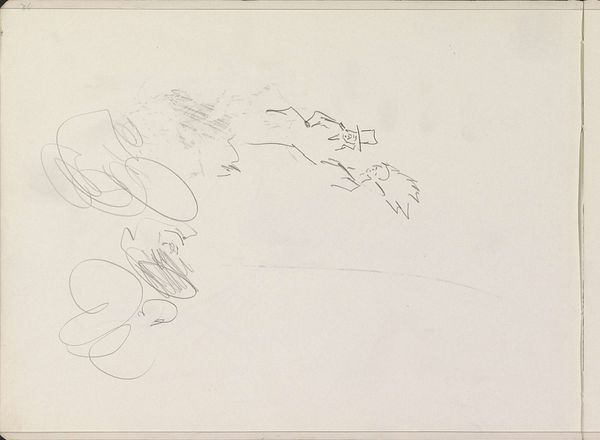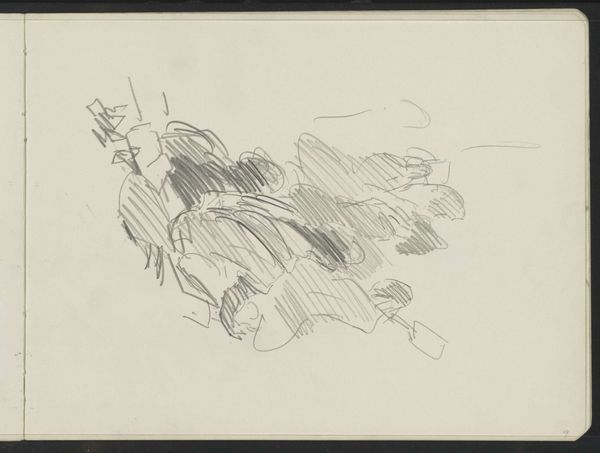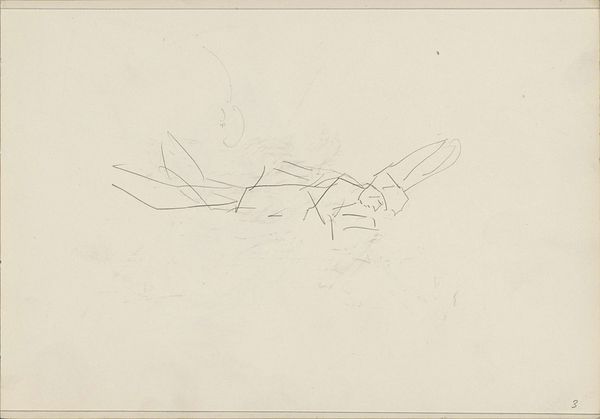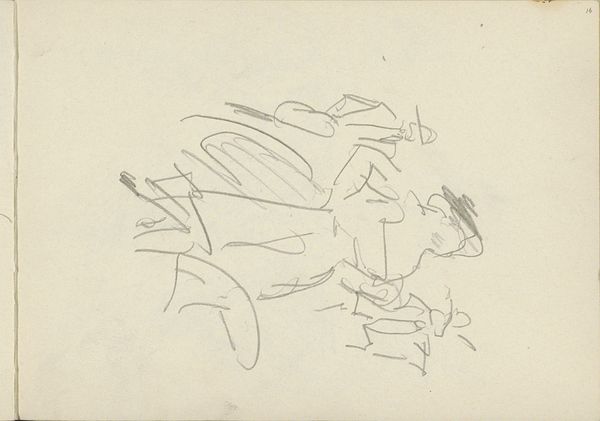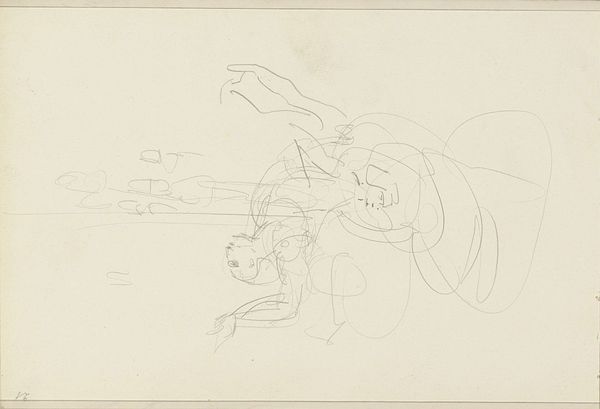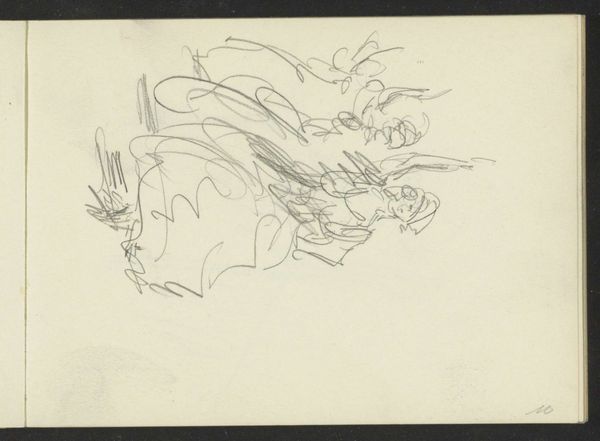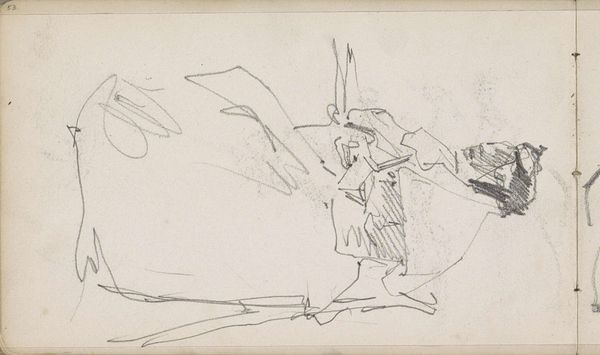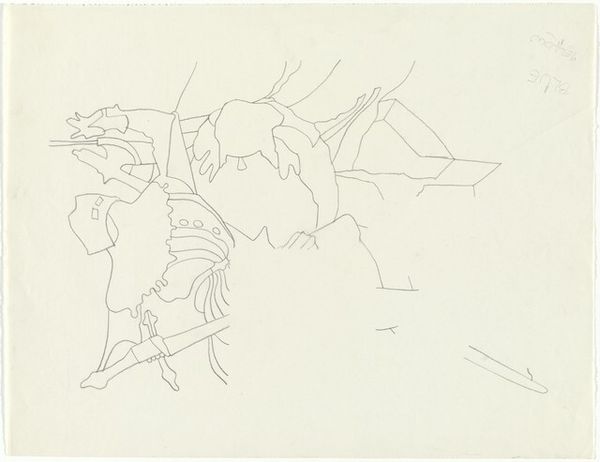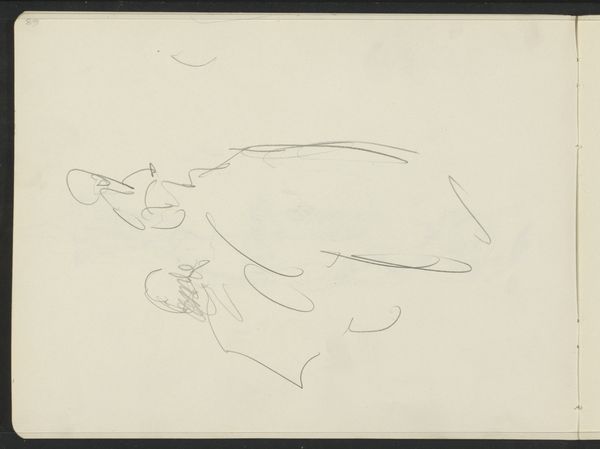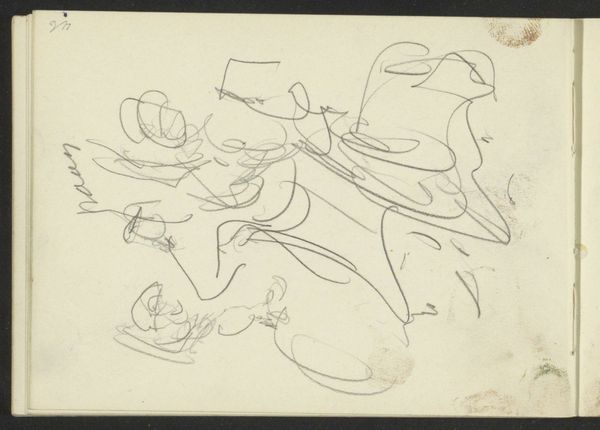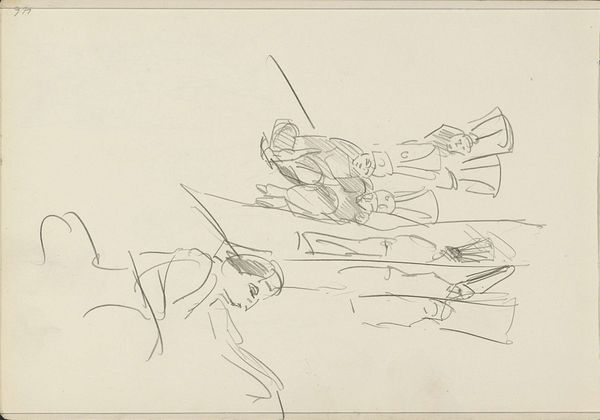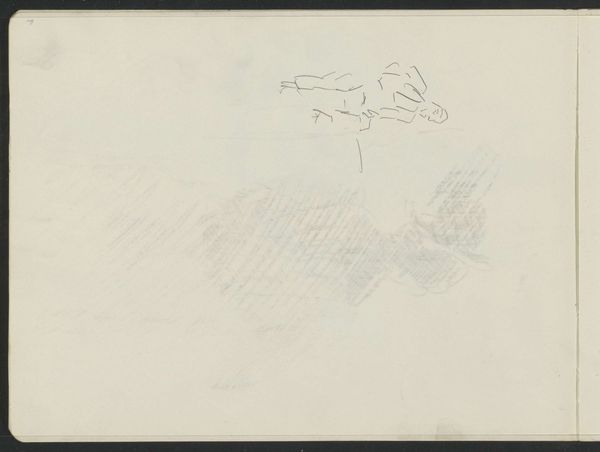
drawing, pencil
#
drawing
#
figuration
#
pencil
Copyright: Rijks Museum: Open Domain
Curator: Looking at this piece from circa 1930 to 1934, titled “Twee figuurstudies, mogelijk vrouwen,” or "Two Figure Studies, possibly women", by Isaac Israels, one senses an urgency in the lines, an almost frantic desire to capture the fleeting essence of form. Editor: Frantic is definitely the word. It looks like a whisper of figures barely held together, more suggestion than solid form. Like trying to remember a dream, isn't it? Fleeting, elusive. Curator: Absolutely, and that elusiveness resonates deeply with Israels' larger body of work. He was consistently fascinated by modern life’s transient moments. Observe how the pencil lines, rapid and overlapping, mimic movement—or perhaps the memory of movement. Editor: Memory, yes. The upper figure seems almost weightless, defying gravity. Are they dancing, maybe? Or perhaps just existing in that in-between space just before the solidified forms come together. The simplicity—the utter bareness of the line—is just haunting, though. Curator: The deliberate restraint employed in this drawing amplifies its symbolic resonance. Israels captures figures in a perpetual state of becoming, reflecting a distinctly modern sensibility attuned to psychological states of constant change. Note also how Israels, as a portraitist and genre painter, subverts expectations. Here he moves away from a conventional study, presenting us instead with an incomplete picture, relying on the viewer to fill in the emotional narrative. Editor: Yes, that feels very honest somehow. The drawing admits that seeing and knowing are partial. These aren’t idealized bodies but a kind of sketch of consciousness itself. There is vulnerability here too. Curator: I concur. Israels successfully uses absence as a narrative tool. What appears unformed ultimately invites our active participation, evoking collective memories of a shared and continuous experience. Editor: Beautifully said. It turns out that these fragmented figures are actually full of history, psychology and feeling. Makes you want to look more closely, not less, which I think is the most impressive thing art can do.
Comments
No comments
Be the first to comment and join the conversation on the ultimate creative platform.
